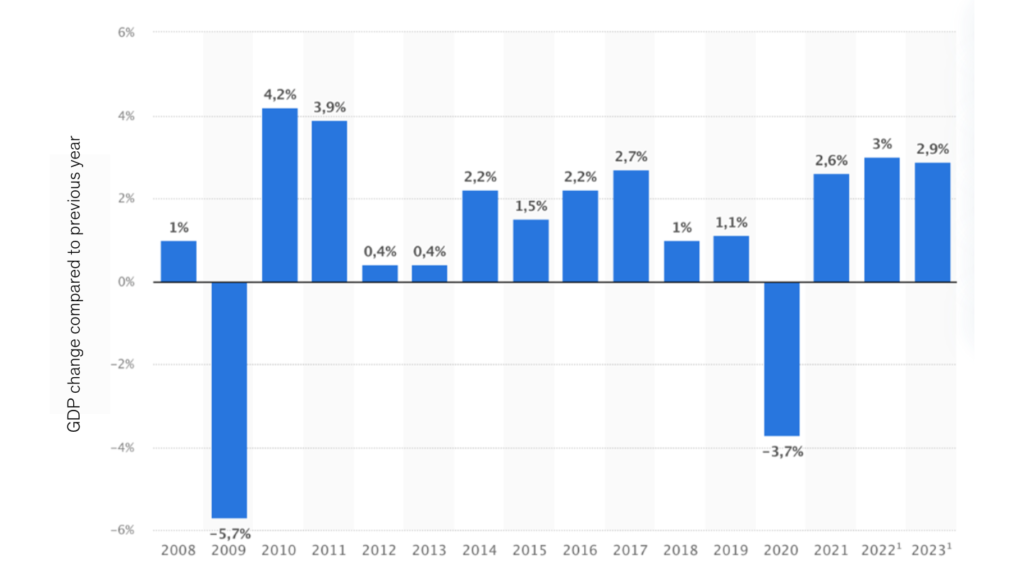Commenting on the unexpectedly robust economic growth, Federal Minister of Economics Robert Habeck said: “We have made the crisis manageable through decisive action in the past year. We put together legislative packages in a short time, mobilised large amounts of money to support the economy and relieve the burden on consumers.”
Germany shows what it can do
Inflation is still high, but has recently decreased noticeably. According to the current data, the economic development over the winter half-year also looks more positive than expected. According to the latest data, the economic growth over the winter half-year also looks more positive than expected. “With this, this country is showing what it can do. We will continue to move forward this year with such determination so that we remain a strong and competitive location,” said Habeck.
Private consumption supports the economy
Private consumption increased strongly, with a growth rate of 4.6 per cent. Consumers spent almost as much as in the period before the Corona crisis. People made up for what was not possible during the pandemic: travel, visits to restaurants, culture, celebrations and trade fairs. This allowed the German economy to grow despite the Ukraine war, supply chain bottlenecks and the energy price crisis.
The federal government’s relief measures, which already took effect last year, and the robust labour market contributed to this: In 2022, economic output was generated by an average of 45.6 million employed persons with their place of work in Germany. The federal government’s relief measures, which had already taken effect in the previous year, and the robust labour market contributed to this: In 2022, economic output was generated by an average of 45.6 million employed persons with their place of work in Germany.
December emergency aid pushed inflation rate down noticeably
A clear slowdown in the upward trend of consumer prices was observed in December. The inflation rate, i.e. the increase in prices, probably decreased by 1.4 percentage points to 8.6 per cent. The December emergency aid from the federal government is likely to have played a significant role in this. The federal government’s December emergency aid may have played a significant role in this. The federal government took over the monthly rebates for gas and heat in December. As a result, energy prices fell sharply compared to the previous month.
Gas and electricity price brakes provide further relief
With the gas and electricity price brakes taking effect in January, the highs from last year with inflation rates of over 10 per cent should be overcome. The gas and electricity price brakes that will take effect in January should mean that the highs from last year with inflation rates of over 10 per cent have been overcome.

Development of real gross domestic product (GDP) in Germany from 2008 to 2021 and DIW forecast to 2023
Source: bundesregierung.de







